We explore World War I, and discuss its causes, features, and aftermath.
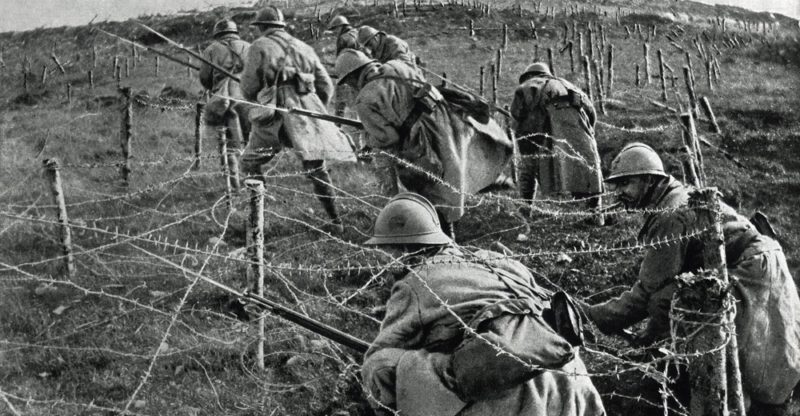
What was World War I?
World War I, also known as the Great War or First World War, was a large-scale armed conflict that took place between 1914 and 1918, in which the major powers of the time clashed. It was the first military conflict to be fought as trench warfare, involving technology that included repeating firearms, bombing, and air strikes over trench lines.
The belligerent countries aligned into two major alliances:
- The Triple Alliance, led by Germany, Italy, and the Austro-Hungarian Empire.
- The Triple Entente, composed of France, Great Britain, and Russia.
The war was a consequence of the political, economic, and territorial competition of the European colonial empires. Although it was waged mainly in Europe, the conflict profoundly impacted the world economy.
The Great War attained unprecedented rates of deaths and destruction. Advances in military technology, the transformation of the struggle into trench warfare, and the mobilization of soldiers in a mass war led to the death of over 10 million soldiers and more than 5 million civilians.
By the end of the conflict, European economies were deeply affected, and the United States had consolidated its power in the new world order. The map of Europe changed drastically: the Central Empires disappeared as major political units, and new countries emerged. The tension brought about by the devastation, poverty, and political instability completely transformed Western societies.
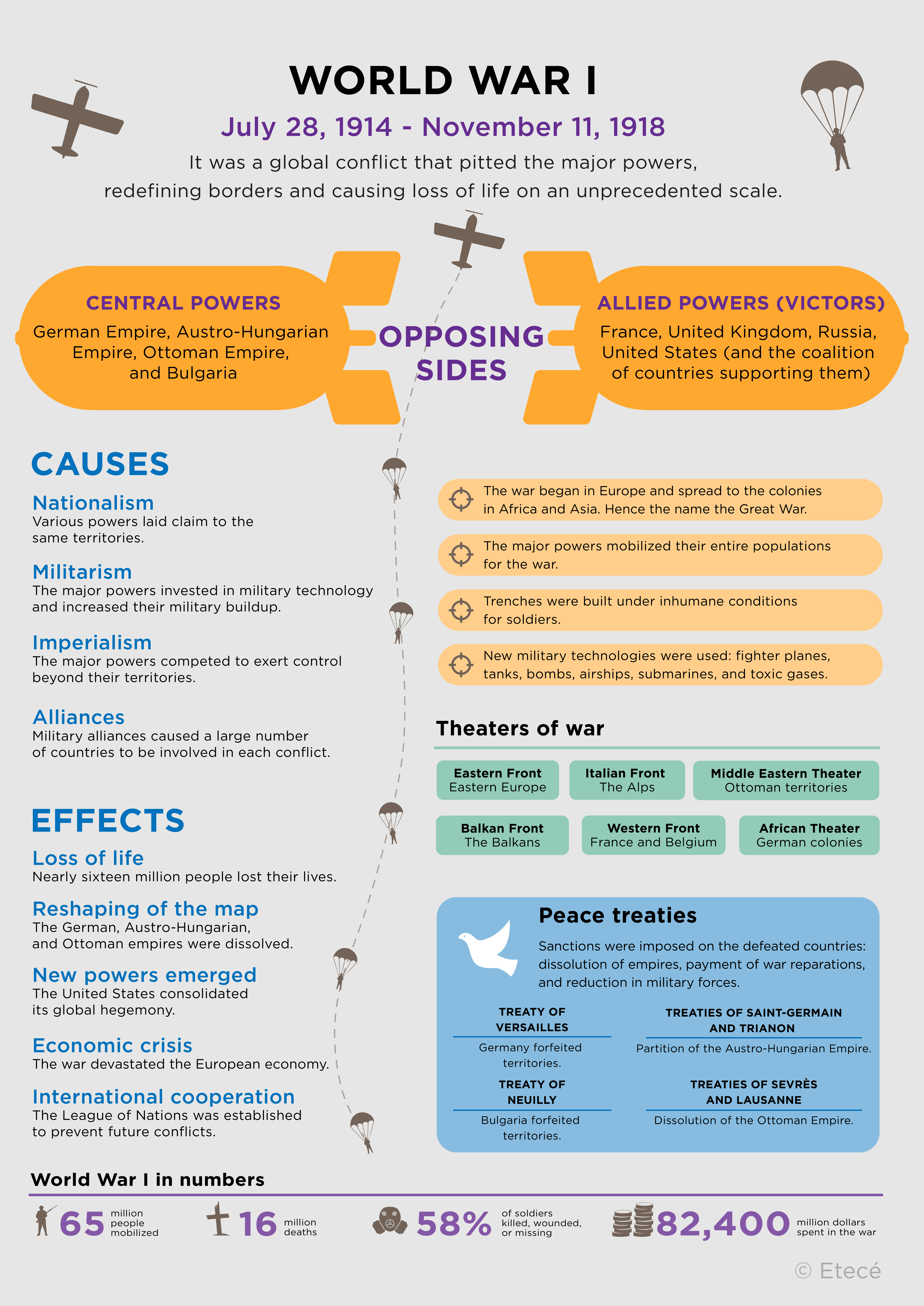
Characteristics of World War I
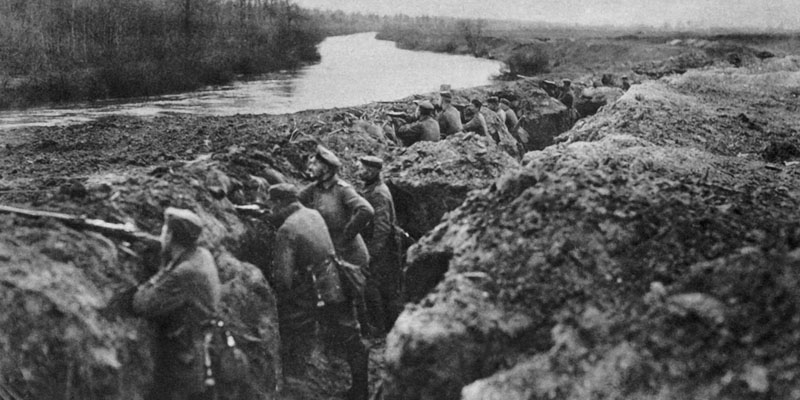
Among the main characteristics of World War I were:
- Time extension. While all the countries that went to war believed it would be a short military conflict with a swift resolution, the Great War lasted four and a half years, from July 28, 1914 to November 11, 1918.
- Mass warfare. For the first time in history, warfare reached a mass scale. During the Great War, the entire population was mobilized for an extraordinary long period (more than 4 years). For the first time, human life was regarded as "war material" available for military purposes on a massive scale.
- Positional Warfare. In contrast to a war of movement, the Great War came to be a war of positions. In this form of combat, soldiers occupied fortified trench lines to defend the attained positions. The battles of Verdun and the Somme are the cruelest examples of this new type of warfare, lasting several months and claiming more than two million soldiers' lives. Faced with the new repeating firearms, the belligerent countries built trench lines on the war fronts.
- Industry at the service of war. In this context, the real war potential lay in each country’s industrial strength. Advances in the metallurgical, mechanical, and chemical industries allowed the creation of new weapons (machine guns, gases, flamethrowers, tanks, and submarines, among others).
Events leading to World War I
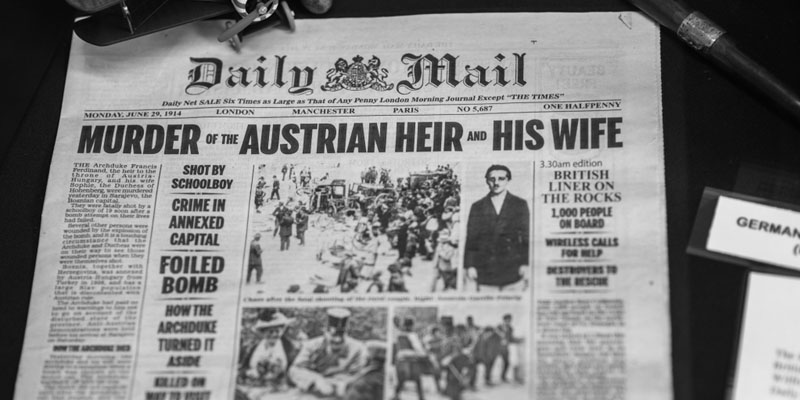
The Great War took place from 1914 to 1918. The starting point of the war is considered to be the assassination of Archduke Franz Ferdinand of Austria (heir to the throne of the Austro-Hungarian Empire) by a young Serbian nationalist in Sarajevo.
This event unleashed a diplomatic dispute that escalated into an armed conflict. The Austro-Hungarian Empire declared war on Serbia. Russia came out to Serbia’s defense, Germany declared war on Russia and invaded Belgium, which then caused Great Britain to enter the conflict against Russia.
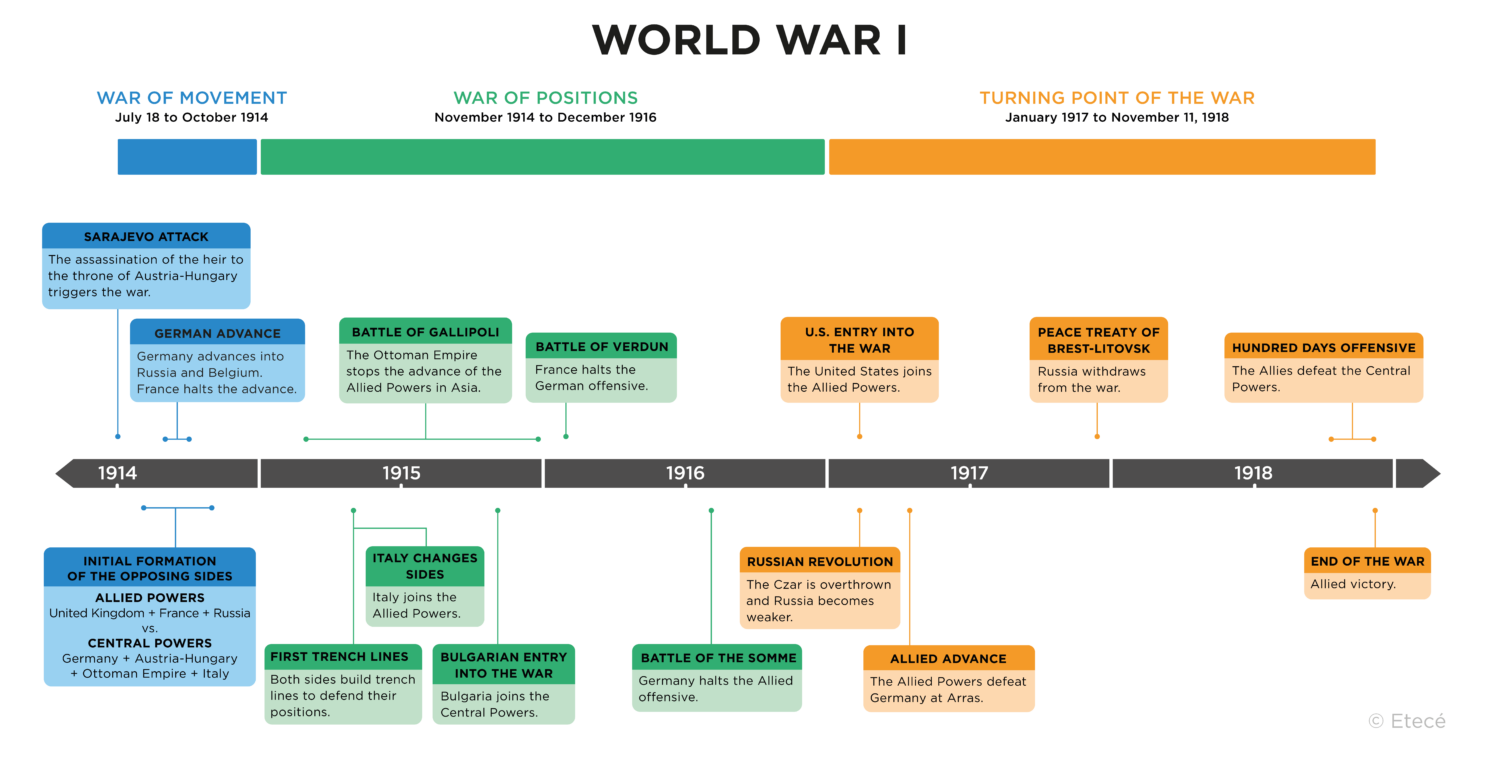
Alliances of World War I

The opposing powers were grouped into two coalitions, which were composed as follows:
- Triple Alliance. It comprised the so-called Central Powers: the German Empire, the Austro-Hungarian Empire, and the Kingdom of Italy. The latter, however, switched sides in the first year of the struggle, and in its place fought the Ottoman Empire and Bulgaria. Other nations would later join the alliance based on their relationships with the Central Powers.
- Triple Entente. Also known as the Allied Powers, it was formed by the United Kingdom, France, and the Russian Empire. Italy joined in 1915, followed by Japan, Romania, and the United States. As the conflict escalated, other nations joined the alliance against the Central Empires.
Background of World War I
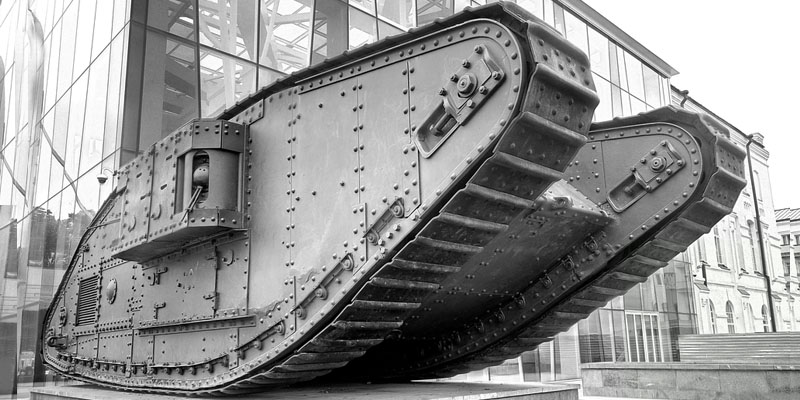
Since the late 19th century, Europe experienced a period known as the "armed peace". The European imperial powers competed for economic and territorial power, leading to continuously increasing tension between states. In this context of latent conflict, the powers began to invest increasingly more resources into arms production and the expansion of their armies.
Given this scenario, the different powers started to weave a system of alliances between states. In 1882, the Triple Alliance was formed, an agreement by which Germany, Italy, and the Austro-Hungarian Empire committed to provide mutual military support. In 1907, Russia, Great Britain, and France signed their own coalition for the same purposes: the Triple Entente.
In this context, several decisive factors led to the escalation of conflicts between the powers:
- Economic competition. With the development of industrial capitalism, the power of states began to be measured by their material and productive resources. Their ability to impose upon other powers depended largely on their economic, industrial, and financial capabilities.
- Territorial imperialism. In the final decades of the 19th century, the European powers sought to extend their political and economic influence in regions where states were weaker. Through military occupation, the European powers imposed themselves on the African continent and in many areas of Oceania. The populations, governments, and local economies were thus subjected to the control of the European states, which implemented measures to satisfy their own interests.
- Nationalism. Since the previous century, a new type of collective identity had consolidated in Europe: national identity. According to nationalist ideas, there should be a direct correlation between territory, political unity, and cultural identity. Based on representations of the past and present, it was believed that countries should be composed of homogeneous cultural units. This new ideology directly conflicted with the reality of European populations, where states were often made up of diverse ethnicities with different origins and customs.
- Competing interests. In the political map of Europe, the different powers and countries had clashing political interests. Powers such as the Austro-Hungarian Empire and Great Britain sought to maintain their might in light of the growth of other states; others, like Italy and Serbia, sought to improve their future; other states, in contrast, had suffered major defeats in the recent past and wished to see their power restored, as was the case of France, Turkey, or Russia.
Theaters of World War I
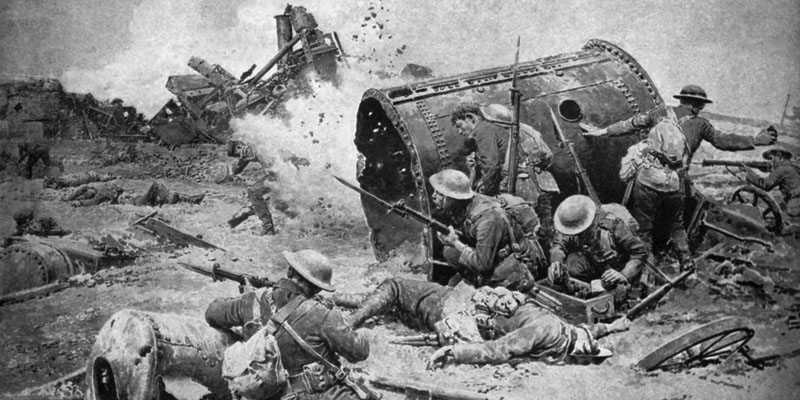
The Great War occurred simultaneously on various theaters:
- Western Front. This was the border where France and Great Britain confronted Germany, following the latter's invasion of Belgium and Luxembourg. Subsequently, trench lines were established, locking both sides in stalemate. The main battles on this front were the Battle of the Marne, the Battle of Verdun, and the Battle of the Somme.
- Eastern Front. This was the territory where Germany and the Austro-Hungarian Empire fought against the forces of the Russian Empire. In addition to border areas between these countries, the front also encompassed the Kingdom of Poland (invaded by Germany), the Carpathian region, and Russian Armenia (with the entry of the Ottoman Empire into the conflict). The most significant battles on this front include the Battle of Tannenberg and the Battle of Lodz.
- Balkan Front. This was the theater where the Austro-Hungarian Empire, the Ottoman Empire, and Bulgaria fought against Serbia, Montenegro, and Greece.
- Middle Eastern theater. This theater mainly involved British troops attempting to penetrate the Ottoman Empire and establish a corridor to Russia. Palestine joined this front in 1916. The most prominent battle was the Battle of Gallipoli.
- African theater. British and French forces in Africa attacked the German colonies. South Africa took advantage of this situation to enter the war and seize Southwest Africa in 1915.
End of World War I
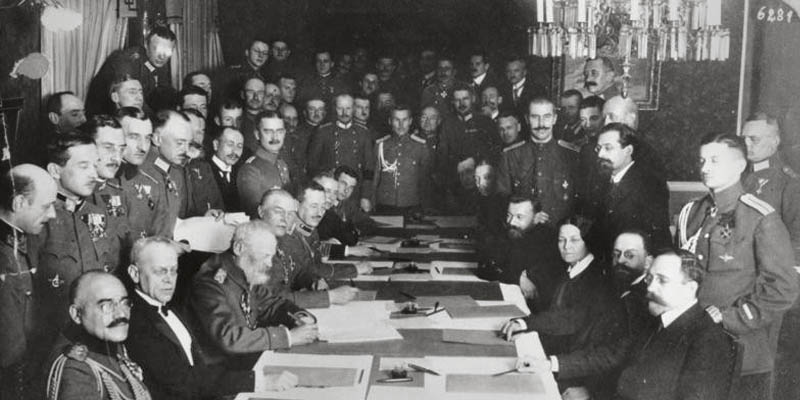
In 1917, two events decisively changed the course of the war. The Russian Empire underwent the Russian Revolution, which ousted the Tsar and established a new regime ruled by the Bolsheviks. The new government, seeking to withdraw from the war with the Central Empires, signed the Treaty of Brest-Litovsk in 1918, under which Russia had to cede the territories of Poland, Lithuania, Estonia, Ukraine, and Finland.
The United States, in turn, entered the conflict and sent arms, ammunition, and food to its allies France and Great Britain.
Given this imbalance, Germany carried out four successive offensives, managing to gain ground over France and approach within 60 kilometers of Paris. However, the unified Allied counteroffensive prevailed over the German army.
Faced with exhaustion and continuous defeats, the German troops began to retreat, and morale deteriorated. Internal pressure and unrest in the German population forced Emperor Wilhelm II to abdicate. On November 11, a council of the provisional German government signed the armistice with France and Great Britain, finally bringing the war to an end.
Consequences of World War I
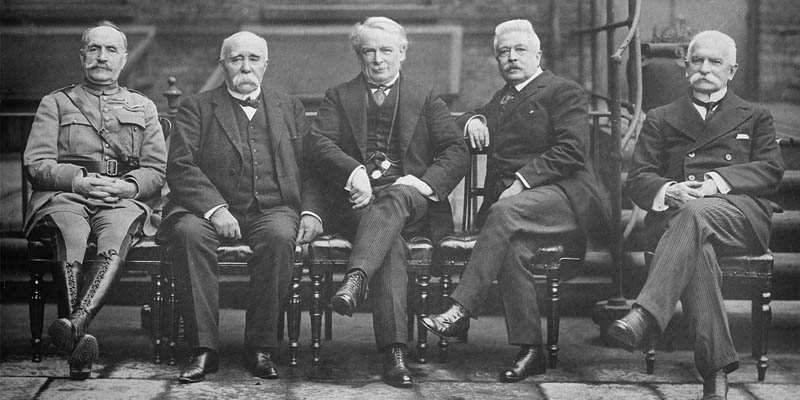
Among the main consequences of World War I are:
- Reordering of the European map. The post-war treaties established the division of territories and the creation of new states, drawing a new political map of Europe. Poland emerged as a new state that would serve as a buffer state between Germany and Russia. The Central Empires were dissolved: Austria, Yugoslavia, Czechoslovakia, and Hungary emerged as autonomous states. Turkish possessions in the Middle East fell into British hands, and the German colonies were divided among the victorious countries.
- Creation of the League of Nations. An international organization was created for the first time with the aim of preventing large-scale armed conflicts in the future. Although the scope of the League of Nations was limited and failed to achieve its objective, it was a clear precursor of the United Nations Organization following World War II.
- Social consequences of the war. Over 10 million soldiers and 5 million civilians were killed in the war. The social gap gained by women, whose labor sustained industrial production during the conflict, began to be recognized. In the United States, Belgium, Germany, Holland, Sweden, Austria, and Hungary, women's suffrage was approved.
- Economic consequences of the war. The European economy was devastated. In addition to the extremely high levels of destruction of industries, fields, and cities, the defeated countries had to endure very harsh conditions of peace, which implied rethinking their economies in addition to facing terrible social tension. The victorious countries, in contrast, recovered their former production levels and consolidated their role as industrial suppliers.
- Hegemony of the United States. The US government used credits and investments as a tool to support European economies, which in turn allowed them to increase their influence in Latin American countries (buyers of European industrial goods).
Treaty of Versailles
At the end of the Great War, the powers made several agreements. The most important of these was the Treaty of Versailles, in which several terms were agreed upon:
- Guilt. Germany's responsibility and the ensuing devastation of the war were officially established. Germany had to accept that its aggression is what triggered the conflict.
- Territorial clauses. A new political map of Europe was drawn (although many of the clauses were based on other treaties signed following the war). As a defeated power, Germany lost 13% of its European territory (where 6.5 million people lived) as well as all its colonies, which were divided among the victorious powers.
- Military clauses. Drastic limitations were placed on the German navy and army, and the Rhineland (the German region bordering France) was demilitarized.
- War reparations. Germany was imposed the payment of war reparations (the amount and destination of the payments were established the following year at the Spa and London conferences).
- League of Nations. The creation of an international organization aimed at mediating between countries to prevent future conflicts was agreed upon. Germany was banned from joining.
The harshness of the conditions imposed and the humiliation felt by the Germans were decisive factors in the deepening of nationalist feelings in Germany and the growth of Nazi National Socialism in the decade that followed.
Explore next:
- Cold War
- Interwar period
- Spanish Civil War
- Conflicts in the Middle East
- History of the European Union
References
- Hobsbawn, E. J. (1998). Historia del siglo XX. Crítica
- Tato, M. I., Bubello, J. P., Castello, A. M. y Campos, E. (2011). Historia de la segunda mitad del siglo XX. Estrada.
- Gilbert, M., & Devoto, A. (2005). La primera guerra mundial. Esfera de los Libros.
Was this information useful to you?
Yes NoThank you for visiting us :)